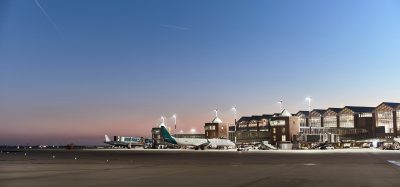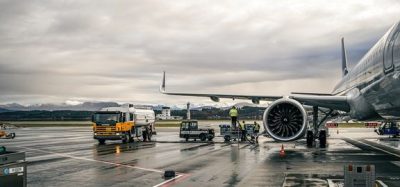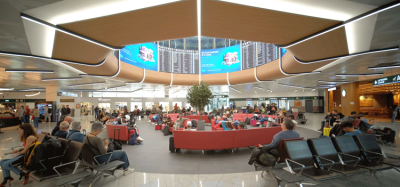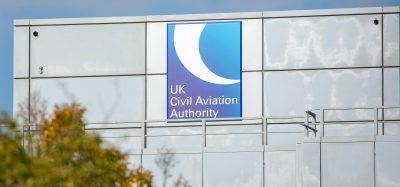Driving international travel to northern Italy though SEA Milan’s airports
Posted: 30 August 2024 | Andrea Tucci | No comments yet
At Routes Asia 2024 in Langkawi, Malaysia, Andrea Tucci, Vice President of SEA Milan Airports, spoke to International Airport Review Editor Holly Miles to discuss how route development will shape the group’s ambitions for 2024.


How is your recovery after the pandemic going?
Essentially, Milan Malpensa Airport is following the trends of the industry, particularly so the European market. In 2023 we saw the full recovery of traffic, seeing more or less the same figures in terms of the carriers’ destinations and number of passengers. What is different compared to 2019? In the first half of 2023 the recovery was smoother, and there was a sprint from July onwards, so in 2023 we went up around 8%. All of this makes 2024 look very promising and we are projecting 6-10% more passengers than last year along our routes. Of course we are still collecting, as an airport what I would call orders, and we are going to get new carriers and new destinations.
How is your cargo development going?
Cargo is the cherry on the cake for Malpensa. As Malpensa, we carry roughly two thirds of the whole air cargo of Italy. In terms of recovery, the cargo industry was a little bit puzzling. During the pandemic, naturally cargo was picking up a lot, so we are at the lower level compared to 2022, but we are 20% above 2019. We carry 670,000 tonnes, which is our second record high year.
Is there any way that you can stimulate cargo or is it solely down to people ordering?
I do believe that, unfortunately, part of the stimulation of the industry is due to issues related to shipping of cargo by sea, particularly where Europe and especially Italy are concerned. But, we are very well diversified because we have 40% couriers, 40% freighters, and nowadays 20% of passenger cargo. We are expecting the growth of long-haul traffic along our routes, so we will be pushing carriers to drive cargo into the belly of the aircraft.
Join our free webinar: Revolutionising India’s travel experience through the Digi Yatra biometric programme.
Air travel is booming, and airports worldwide need to move passengers faster and more efficiently. Join the Digi Yatra Foundation and IDEMIA to discover how this groundbreaking initiative has already enabled over 60 million seamless domestic journeys using biometric identity management.
Date: 16 Dec | Time: 09:00 GMT
rEGISTER NOW TO SECURE YOUR SPOT
Can’t attend live? No worries – register to receive the recording post-event.
What new routes have you opened this year that you are excited about?
Let me say China is definitely our jewel for this year in terms of our new routes. This is the result of long-term working relationships, as when the Italian government renegotiated the bilateral agreements with China, it basically untapped the capacity. Since then, we have seen the interest that was shown by the Chinese carrier become a reality, and now, we are collecting this data. To give you some figures, we are probably the fastest growing airport in Europe to China. We have under 40% capacity growth compared to 2019, which is driving the growth of Italy, which is 125%. And if you consider that Europe is still below 2019 levels by minus 20%, it demonstrates the interest of Chinese traffic to Italy and particularly to Milan.
In terms of variety of destination, we have eight destinations in mainland China, plus Hong Kong, which are operated by five carriers, and we have the only Italian carrier which is flying to China from Milan – Neos airline.
The stations which have been opened to China are new, so we are seeing two phenomena. First, the growing trend of opening routes and some weakness of the Chinese market.


Is the Indian market of importance to you?
The Indian market is of great importance. So far we have seen the market be developed mainly by the Gulf carriers. We serve all the gateways into the Gulf. The new Air India has started operation to Italy and the first airport so far is Malpensa, which is showing the high potential of the route demand to India.
In addition to that, we have Neos, the only Italian local carrier, operating from Milan, which is serving Amritsar. In the future, we expect another carrier will join the Malpensa hub or as a potential result of the merge between India and Vistara, possibly to open another gateway to Milan. The market potential is there.
ITA Airways ended its service at Milan Malpensa on 8 January 2024 and it was said to mark the end of an era for the airport and the flag carrier. What’s the story there?
Now there is some clarity on the market, at least where Milan is concerned and a clear strategy has been declared by ITA Airways. ITA decided to follow the model of hub and spoke. Milan will be considered as a spoke, which basically gives a lot of room to the other carriers to grow. Our strategy of course is to fly direct, to provide connectivity to local and incoming traffic.
So far we are succeeding, as 85% of our traffic is direct, 15% of our remaining traffic is flying indirect. Of this 15%, 6% is flying indirect even if there is a direct flight. This is either because there is a lack of frequency, the timings do not work or because of pricing. The remaining 9% is flying indirect, which I feel is a good ratio because this 9% is on average doing 1.1 stops.
If these are the parameters to measure connectivity, Malpensa and Linate Airport are pretty well positioned, encouraging carriers to develop direct services and in particular to develop long-haul gateways. Nowadays, our traffic is flowing through 18 long-haul gateways that are experiencing higher popularity compared to those gateways which are of proximity, the European gateways. We have different strategies with ITA of course in this case, but I hope that ITA will succeed in their strategy because we need to have an Italian carrier. But in Lombardy, we are developing the strategy with other carriers who are mostly not national.
What trends are you observing with your passengers?
We are carefully observing the behaviour of the passenger. We have developed an innovative tool which is measuring the catchment area, the mobility of the passenger to and from our airports. With the mobile company we track their origin and destination in Italy.
What this is showing us, is that the main destination that we serve is Milan, and the main region that we serve is Lombardy, with 60% of the traffic which originates from Lombardy served by our airports. However, 40% is served outside. This shows Malpensa is the leader of the north Italy region overall.
In terms of destination, we would like to see Malpensa become much more pivotal to drive tourism to the north of Italy.
Where are you currently underserved and what are your route development ambitions?
Our strategy is to develop routes with foreign carriers. At present, South America is the most unserved area, as we have only one foreign carrier serving the country, namely LATAM.
Of course, we expect the carrier to grow in the near future, and of course we welcome other new carriers to fly.


Are you finding that sustainable aviation fuel is becoming a part of your conversations with airlines?
In 2023, we launched a programme of sustainability which recognises the incentive to provide sustainable aviation fuel (SAF). We are at the beginning of this process, so far we have been able to provide just 600 tonnes of fuels, which was subsidised by us. But SAF is a key point for developing industry and is a target in the programme of all the carriers. We are working with all the providers to reach the target of providing 20,000 tonnes of SAF to our airport in 2025.
What challenges are you facing for this year?
Naturally the wars and unrest in the world are terrible for humanity and provide challenges for the aviation industry, among others. We believe demand for travel is pretty solid, but you can never be complacent. We are prepared, we can be flexible and adapt to whatever situation we are presented with. We, like so many airports around the globe, have experiences and lessons learned from the pandemic. The key is flexibility – closely followed by our workforce.
In 2024, we are focusing on planning resources and automating the process to be less dependent on the times of peak demand which require resources to be deployed immediately.
We are investing in next generation security technology, particularly self-serve baggage drop, biometrics, smart security. Terminal 2 is now completely self-service for bag-drop. We also hope to introduce the latest generation machinery which will make us more efficient and effective, hopefully resulting in higher levels of passenger satisfaction.
What is the buzz in the route development industry right now?
In Italy, everybody’s talking about the ITA Lufthansa potential merge. That will probably completely change the competition in Europe and we will see what is going to happen, which airport will be selected, in particular what the modality will be, direct flying or still hub and spoke. Ryanair in particular, is gaining a lot of market share in Italy.
What are you most looking forward to this year?
We would like to see a much more stable and trustful growth of the industry. We would like to see the regulator be a little more encouraging of innovation at airports and to support this, even financially. It’s punishing the industry, and not incentivising innovation, in particular for sustainability. It makes our industry look bad, and like it’s not delivering added value. I would like to see more incentive to change the industry to be truly sustainable, not to be punished because we play the role of connecting the world.


The International Airport Summit is open for registration!
Date: 19 – 20 November 2025
Location: JW Marriott Hotel Berlin
At our flagship event of the year, we will dive into the future of airport operations, with expert-led sessions on passenger experience, innovative smart technologies, baggage handling, airside operations, data, security, and sustainability.
This is where global airport leaders come together to share insights, challenges, and real-world solutions.
Limited complimentary passes are available for eligible professionals – first come, first served!
Issue
Related topics
Airport development, Cargo, Passenger experience and seamless travel, Passenger volumes, Route development, Sustainability


















